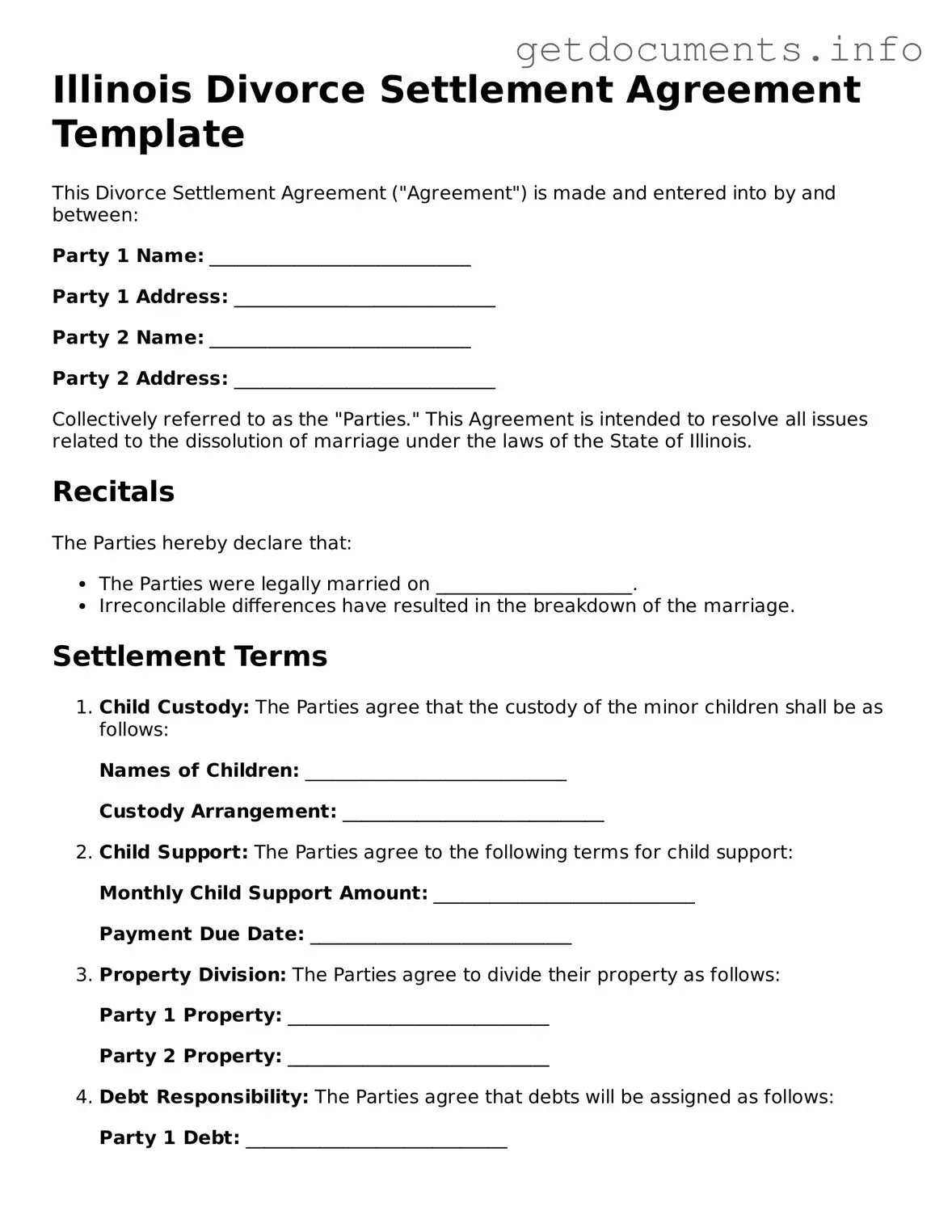Free Divorce Settlement Agreement Template for Illinois
The Illinois Divorce Settlement Agreement form is a crucial document that outlines the terms and conditions agreed upon by both parties during a divorce. This agreement addresses various aspects such as property division, child custody, and support obligations, ensuring a clear understanding between the spouses. To begin the process, consider filling out the form by clicking the button below.
Access Divorce Settlement Agreement Editor
